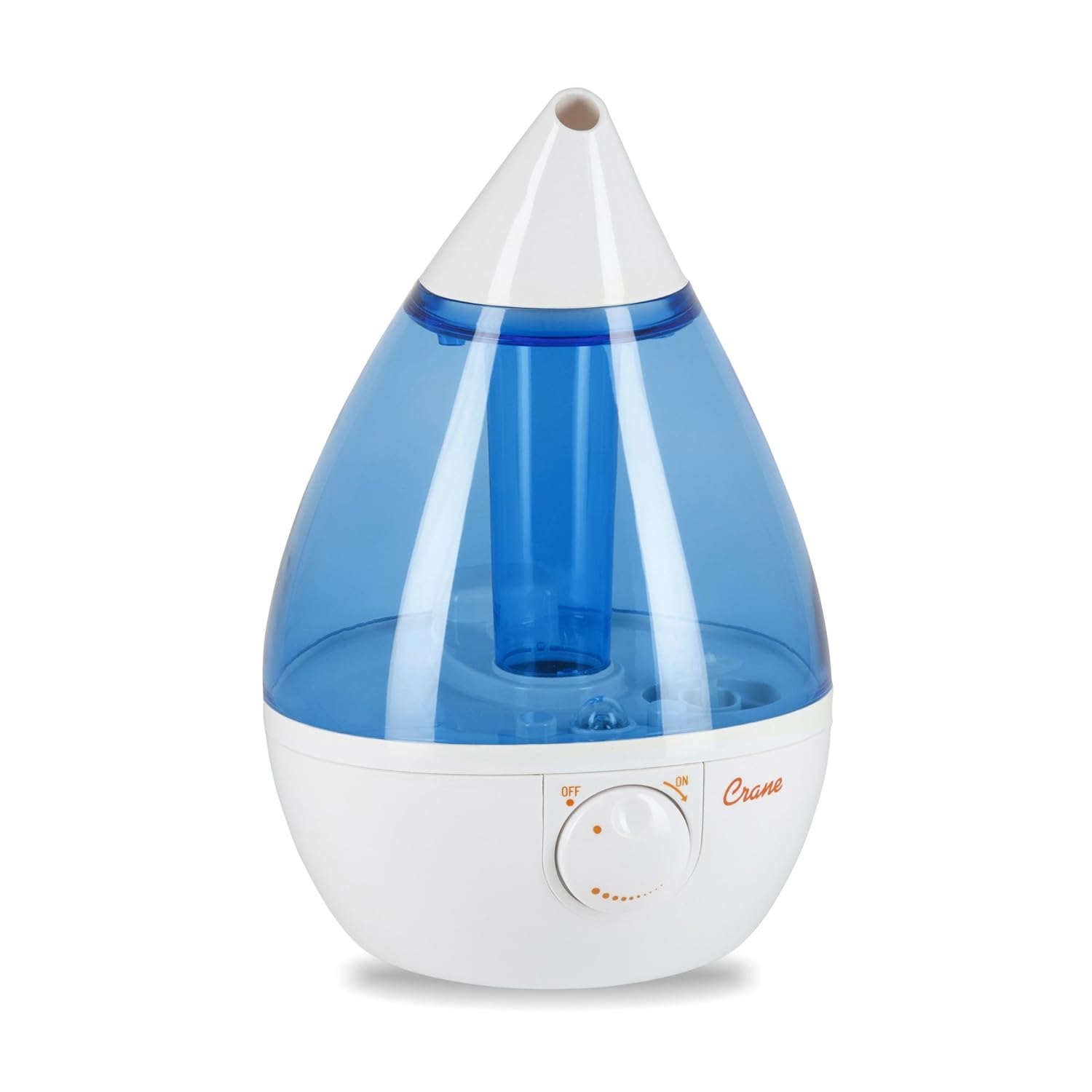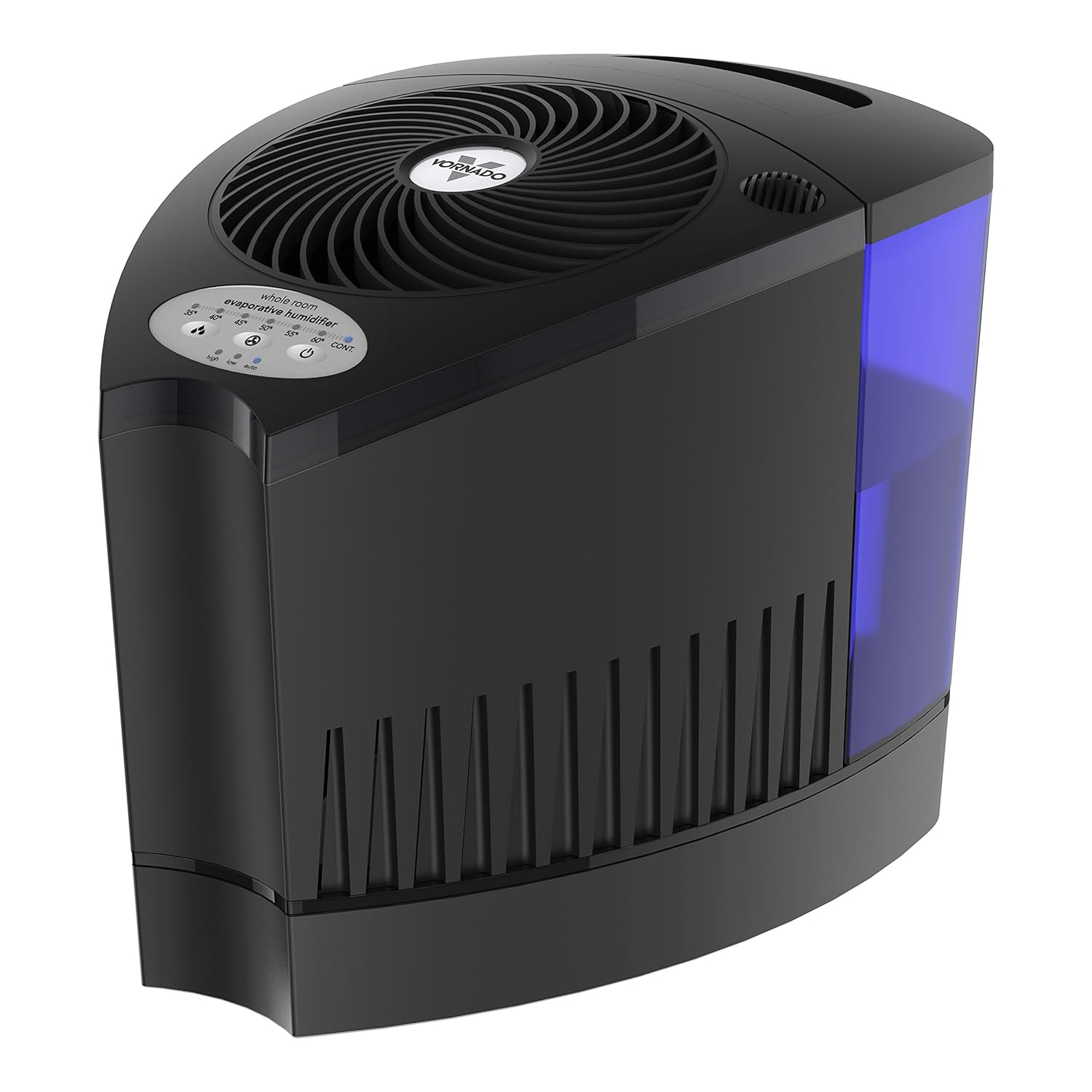During the cold weather do you suffer from dry, chapped lips? Dry skin? Sore throats? Suffering from asthma or allergies? Problem with static electricity? These are all signs that you may need more moisture in your home or office. This can be handled effectively using a humidifier. But what is the best humidifier? With so many different types of humidifiers available, we’ve found that the only way we can answer that question is—it depends on what you need and the room size. So, we have attempted our list of top humidifiers in India.
Why do you need a humidifier?
Dry room air causes:
- the membranes in your respiratory system to dry out, and can also cause chapped lips and stinging.
- Encourages infections and illnesses of the respiratory system.
- fatigue, tiredness and lack of concentration.
- Encourages dust formation and the slow moving or stationary electrical charging of textiles made of synthetic fibers, carpets and plastic and timber flooring
- Damages household wood made furnishings
- Detunes musical instruments

Baby And Humidifier
The physical comfort of human and animals are dependent on many influences. One of those is correctly humidified air. During the heating period, the cold outside area which streams into living spaces through the windows is warmed. This results in a plummet in the relative air moisture. An adverse climate for plants and animals, wooden objects and furniture dry out and people feel uncomfortable and are susceptible to colds in higher numbers. As a rule, room climate is comfortable when the relative moisture is between 40% and 60%. Air humidification is especially wise in the winter.
In cold climate conditions, windows and walls may develop fog or frost from excessive humidity indoors. If this occurs, reduce the mist output setting to avoid damage from condensed water dripping onto window sills. If there is too much humidity in a room this may allow moisture to accumulate on surfaces which can allow bacteria and fungi can grow. Allowing moisture to gather may also damage furniture and walls. To lower excessive levels of humidity, especially in small rooms, leave the room door open and adjust the humidifier’s mist intensity control setting.
What is the ideal humidity level?
Humidity is the amount of water vapor in the air. The amount of humidity varies depending on the season, weather and where you live. Generally, humidity levels are higher in the summer and lower during winter months. Ideally, humidity in your home should be between 30 and 50 percent. Humidity that’s too low or too high can cause problems. If humidity is too high then you may need a dehumidifier.
- Low humidity can cause your skin to dry out, irritate your nasal passages, cause sore throats, and make your eyes particularly itchy. It makes it seem colder than it actually is. In the summer, high humidity makes it seem warmer than it is because sweat cannot evaporate from your body. In the winter, low humidity has the opposite effect. If you take a look at the chart on the right, you’ll see that if it is 70 degrees F (21 degrees C) inside your home and the humidity is 10 percent, it feels like it is 65 degrees F (18 degrees C). Simply by bringing the humidity up to 70 percent, you can make it feel 5 degrees F (3 degrees C) warmer in your home.
- High humidity can make your home feel stale causing condensation on walls, floors and other surfaces which can produce the growth of toxic bacteria, dust mites and molds. These allergens can cause respiratory problems and trigger allergy and asthma flare-ups.
How to measure humidity
The best way to test humidity levels in your house is with a hygrometer. This device, which looks like a thermometer, measures the amount of moisture in the air. Hygrometers can be purchased at hardware stores and department stores. When buying a humidifier, consider buying one with an in-built hygrometer (humidistat) that maintains humidity within healthy limits.
How do humidifiers work?
Types of Humidifiers
There are three major types of humidifiers based on size–tabletop, console (whole house), and in duct (whole house).
1) Tabletop Humidifiers
Depending on what you require and amount you want to spend there are several types of tabletop humidifiers and are categorized as either Warm Mist or Cool Mist.
Cool-Mist (Evaporative and Ultrasonic) Humidifiers
Evaporative Humidifiers – An evaporative humidifier can blow air through or over a wet wick or filter via a fan, which has been absorbing water from the unit’s reservoir. When the fan blows air through the wick filter, the water in the wick evaporates and is distributed into the room in the form of humidified air. While this method uses no heating element, and therefore uses little electricity to run, it does require regular replacement of the wick filters. There is also a chance of mold, bacteria and fungi that may grow on the paper-based wick as it sits in the water. There are antibacterial treatments and cartridges available which can be added to the water tanks to help prevent the growth of bacteria, but eventually the wick needs to be replaced with a new one. Replacing the wick filter depends on a number of factors, including the hardness of the water and how often it is used, but in generally wick filters should be replaced at least every two months.
Ultrasonic Humidifiers – An ultrasonic humidifier is another form of a cool mist humidifier which uses silent, high-frequency sound to vibrate a disk (a small metal diaphragm) which is soaked in water to produce mist.cool mist humidifiers This breaks down the water into very small water drops and becomes a fine vapor like mist. Ultrasonic humidifiers are not only the quietest humidifiers available, but they also use very little electricity. They can release minerals that are present in the water into the air with the mist. These minerals sometimes take the form of a fine dust, called “white dust”, which can settle on furniture near the humidifier.
Warm-Mist Humidifiers
Warm mist humidifiers have a heating component to heat the water, which releases a warm steam into the room. Some warm mist humidifiers also have an optional absorption pad, which resides inside the heating component and collects mineral deposits left behind from the heated water. The amount of mineral deposits produced will depend on your water hardness. Other than this very inexpensive and optional replacement pad, no other filters are needed with a warm mist humidifier. The heating component does use more electricity than a cool mist humidifier, but overall the long term costs are low. Some pediatricians caution against using a warm mist humidifier in a baby’s room, as the water inside the humidifier can become very hot. It is always advisable to place any humidifier out of reach of a baby or toddler.
Which is the best humidifier: warm-mist or a cool-mist?
Both types of humidifiers provide relief from dry indoor air and is really a personal preference. Warm moisture humidifiers, however, can include a provision for medication to reduce congestion. Cool moisture humidifiers provide cool moisture to musty indoor air, and is better if you have small children as they don’t heat up. A major advantage of cool-mist humidifiers vs warm-mist humidifiers is the cost. Cool-mist humidifiers are less expensive than are warm-mist humidifiers because you’re not paying for an extra heating component. You may also pay less in energy costs.Warm mist humidifiers also can make the room air feel a bit warmer due to the steam released into the air. In contrast, cool mist humidifiers cause the air to feel colder when the fan blows air over an evaporative filter. Therefore, if you live in a warmer temperatures, you may prefer a cool mist humidifier, while those who live in colder temperatures may prefer a warm mist humidifier.
2) Console (Whole House) Humidifiers
While tabletop humidifiers provide moisture to a single room, console humidifiers (also called whole house humidifiers) can humidify a number of rooms concurrently, measuring up to 3,000 square feet. These humidifiers are portable and tend to be placed on the floor in a central location for the best moisture coverage. Scientists do recommend using a humidifier to reduce the threat of spreading the flu virus. Humidifcation experts indicate that consistent humidity levels be maintained in every room of the home to provide sufficient protection from viruses. Since single-room humidifiers are not designed to sustain humidity levels of an entire residence, they are encouraged to use whole-house evaporative humidifiers to provide an energy-efficient solution to maintaining healthy humidity levels year-round.
Since console humidifiers have a larger tank, capable of producing between 8-14 gallons of moisture output per day; they can be placed near a central cold air return duct for distribution of moisture throughout the house. Whilst you won’t need to refill it as much as the tabletop version, the process can be a bit cumbersome. Many whole house humidifiers are evaporative rather than ultrasonic, and can be noisier and require the replacement of costly filters. However, these humidifiers will not produce the white dust from released minerals like the ultrasonic models.
3) In-Duct Humidifiers
In-duct humidifiers are usually installed next to a furnace and connect directly to the water line to humidify all the rooms in your home. As air is heated, it passes through an evaporator pad saturated with water. Here, the air absorbs moisture and is released into your home along with heated or cooled air.
How to choose the best humidifier
Room Size
Measure the room size in square feet so that you know the capacity your room humidifier has to be. But if you need to humidify the whole house, it may be better to install a whole house humidifier. The capacity of a humidifier is defined as the amount of water released into the air in 24 hours. It is NOT the capacity of the tank. Output is the standard measure of a humidifier’s power, which determines the number of rooms it can humidify.
Features of Humidifiers
There are some important features of humidifiers to consider:
Noise Level
There are humidifiers that are noisy in comparison to others. This can cause problems when sleeping if its placed in your bedroom at night. Check humidifiers for noise level and decide whether you want to run the humidifier during the night.
Control settings
Easy to use control settings generally work best, especially one that is able to control the humidifying time, humidity level and fan speed. Digital control settings are preferable.
Automatic shut-off
Having the humidifier turning off automatically when the tank is empty is important.
Ease of handling and maintenance
If you want to move the humidifier around to humidify different areas of the house, make sure you get a lightweight one. The tank should be easy to clean and fill up.
Safety features
Warm mist humidifier need to be kept out of reach of children because they can get very hot. Check for safety features such as thermal cutoff, overheat protection and automatic tip-over switch that will prevent electrical hazards.
Filters
Will you need to change the filter for the humidifier you buy? Check the price of humidifier filters as well because you’d want to include them in your budget.
The post Best Humidifiers in India appeared first on Apani Rasoi.









